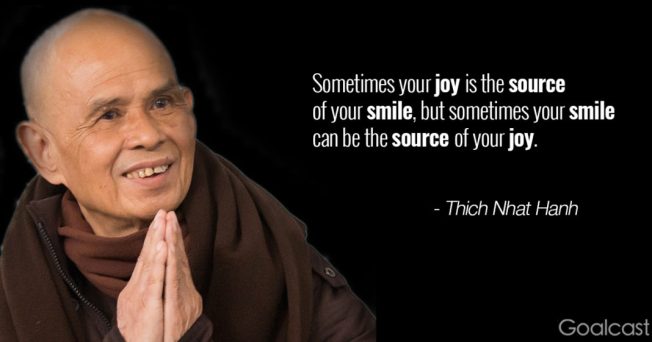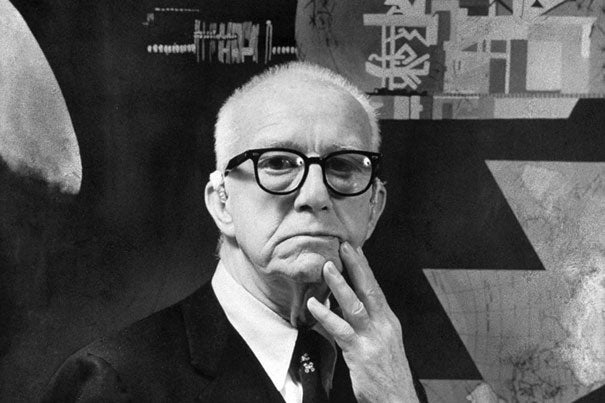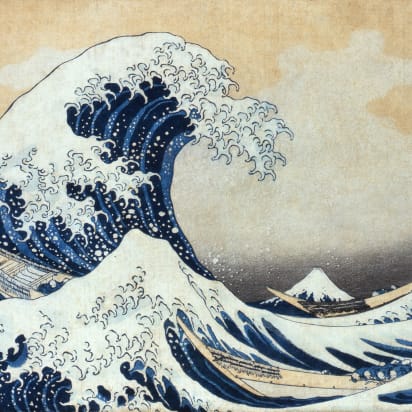Thich Nhat Hanh on the Satipatthana Sutta, the basic manual on meditation from the time of the Buddha

To understand something is to take that thing up and to be one with it. The Indians have a wonderful example. If a grain of salt would like to measure the degree of saltiness of the ocean, to have a perception of the saltiness of the ocean, it drops itself into the ocean and becomes one with it, and the perception is perfect.
Nowadays, nuclear physicists have begun to feel the same way. When they get deeply into the world of subatomic particles, they see their mind in it. An electron is first of all your concept of the electron. The object of your study is no longer separated from your mind. Your mind is very much in it. Modern physicists think that the word “observer” is no longer valid, because an observer is distinct from the object he observes. They have discovered that if you retain that kind of distinction, you cannot go very far in subatomic nuclear science. So they have proposed the word “participant.”You are not an observer, you are a participant.
That is the way I always feel when I give a lecture. I don’t want the audience to be outside, to observe, to listen only. I want them to be one with me, to practice, to breathe. The speaker and the people who listen must become one in order for right perception to take place. Nonduality means “not two,” but “not two” also means “not one.” That is why we say “nondual” instead of “one.” Because if there is one, there are two. If you want to avoid two, you have to avoid one also.
In the Satipatthana Sutta, the basic manual on meditation from the time of the Buddha, it is recorded, “The practitioner will have to contemplate body in the body, feelings in the feelings, mind in the mind, objects of mind in the objects of mind.” The words are clear. The repetition, “body in the body,” is not just to underline the importance of it. Contemplating body in the body means that you do not stand outside of something to contemplate it. You must be one with it, with no distinction between the contemplator and the contemplated. Contemplating body in the body means that you should not look on your body as the object of your contemplation. You have to be one with it.
The message is clear. “Nonduality” is the key word for Buddhist meditation. To sit is not enough. We have to be at the same time. To be what? To be is to be a something, you cannot be a nothing. To eat, you have to eat something, you cannot just eat nothing. To be aware is to be aware of something. To be angry is to be angry at something. So to be is to be something, and that something is what is going on: in your body, in your mind, in your feelings, and in the world.
While sitting, you sit and you are. You are what? You are the breathing. Not only the one who breathes-you are the breathing and the smiling. It is like a television set of one million channels. When you turn the breathing on, you are the breathing. When you turn the irritation on, you are the irritation. You are one with it. Irritation and breathing are not things outside of you. You contemplate them in them, because you are one with them.
If I have a feeling of anger, how would I meditate on that? How would I deal with it, as a Buddhist, or as an intelligent person? I would not look upon anger as something foreign to me that I have to fight, to have surgery in order to remove it. I know that anger is me, and I am anger. Nonduality, not two (a-dvaita). I have to deal with my anger with care, with love, with tenderness, with nonviolence.
Because anger is me, I have to tend my anger as I would tend a younger brother or sister, with love, with care, because I myself am anger, I am in it, I am it. In Buddhism we do not consider anger, hatred, greed as enemies we have to fight, to destroy, to annihilate. If we annihilate anger, we annihilate ourselves.
Dealing with anger in that way would be like transforming yourself into a battlefield, tearing yourself into parts, one part taking the side of Buddha, and one part taking the side of Mara. If you struggle in that way, you do violence to yourself. If you cannot be compassionate to yourself, you will not be able to be compassionate to others. When we get angry, we have to produce awareness: “I am angry. Anger is in me. I am anger.” That is the first thing to do.
In the case of a minor irritation, the recognition of the presence of the irritation, along with a smile and a few breaths will usually be enough to transform the irritation into something more positive, like forgiveness, understanding, and love. Irritation is a destructive energy. We cannot destroy the energy; we can only convert it into a more constructive energy. Forgiveness is a constructive energy. Understanding is a constructive energy.
Suppose you are in the desert, and you only have one glass of muddy water. You have to transform the muddy water into clear water to drink, you cannot just throw it away. So you let it settle for a while, and clear water will appear. In the same way, we have to convert anger into some kind of energy that is more constructive, because anger is you. Without anger you have nothing left.
That is the work of meditation.
excerpt from Thich Nhat Hanh, “Being Peace”, PDF p. 43












